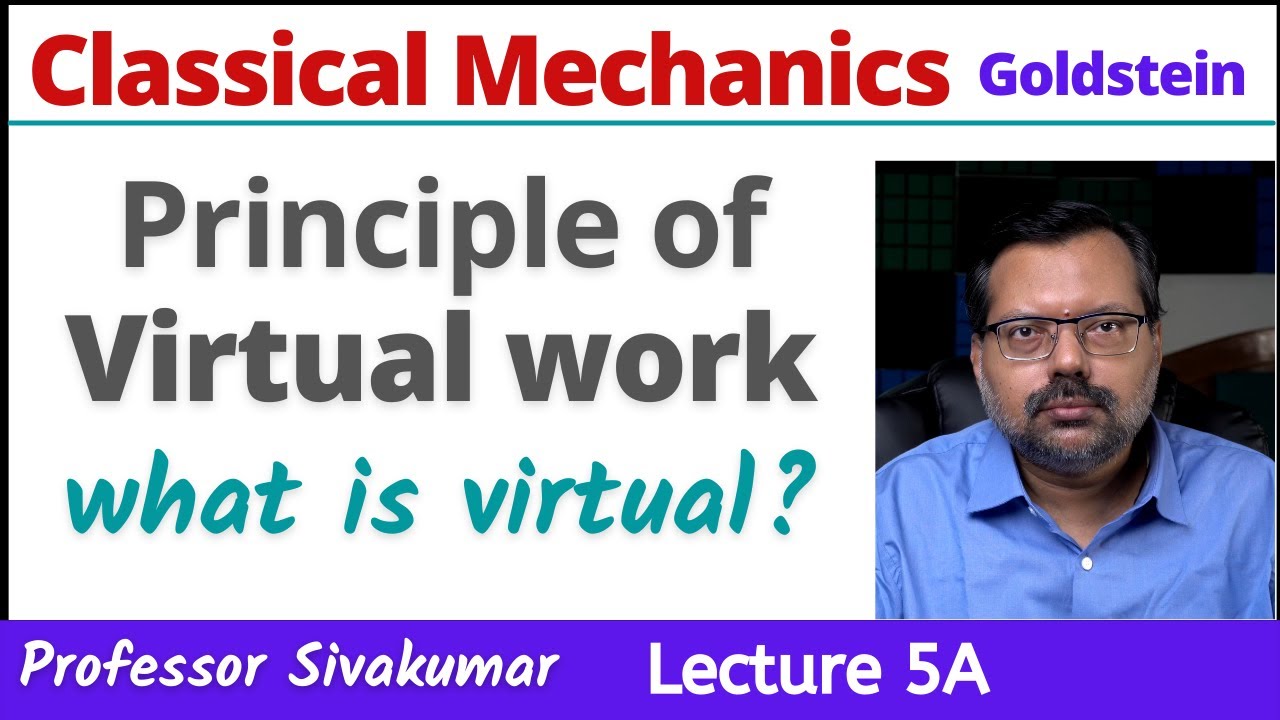Virtual work is the total work done by forces on a mechanical system as it moves through a set of virtual displacements.
When a system is in static equilibrium, the principle of least action requires that virtual work equal zero.
However, not all the actual displacements in a system are allowed as virtual displacements. This is counterintuitive and explains why some worked examples are given in this article.
Theoretical Background
The theoretical background of virtual work in classical mechanics is a complicated subject. Many different axioms have been used to define it and no shared formulation has ever been provided.
The most important axiom is that forces acting on a system in static equilibrium do not create any virtual displacements in its configuration space. These virtual displacements are infinitesimal kinematical perturbations that need not occur in the physical system.
Nevertheless, students often find it difficult to understand this concept when it is presented to them in their textbooks and laboratory exercises. This article attempts to address the confusion and ambiguity that may arise in their thinking when it comes to virtual displacement and virtual work.
The idea of virtual work can be traced back to the Aristotelian school. Various enunciations of the principle have been made throughout the history and philosophy of science; from Aristotle to Leibniz’s vis viva, Maupertuis’ least action to Euler and Lagrange with their calculus of variations (statics and dynamics).
Definition
Virtual work is the total work done by the applied forces and inertial forces of a mechanical system as it moves through a set of virtual displacements. It is a key concept in classical mechanics and has been used since the beginning of statics research.
However, it is not always made precise and often appears vague and ambiguous to students. This article presents a more systematic and precise definition that not only gives one a more exact and clear idea of virtual work, but also allows one to express it quantitatively for any given constrained system.
In classical mechanics, a displacement is called virtual when it is a continuous, imaginary, and compatible variation of an external force, internal force, or strain. It must satisfy boundary criteria at the supports and be consistent with the limitations of the structure.
Examples
In classical mechanics, the principle of virtual work is used to derive the equations for a mechanical system. It is based on the fact that when a mechanical system is in static equilibrium, the forces operating on it will perform zero work, regardless of how much deformation they cause.
The principle is also applicable to dynamic systems where the forces are acting on the system in conjunction with the acceleration terms of Newton’s law of motion. D’Alembert showed that the acceleration terms should be treated as inertia forces, and that the principle of virtual work applies to this case.
In general, virtual work is the total work done by all forces in a system as it moves through a set of infinitesimally small virtual displacements. The work performed by a force on a particle as it moves along a virtual displacement is different for each possible virtual displacement that the particle may follow.
Applications
Virtual work is used to calculate deflections of trusses, beams and frames (in fact any mechanical system). It is a well-established method for estimating deflections and is one of the most widely applied methods in mechanics.
The principle is derived from the Lagrangian equation and is used to study systems with a finite number of degrees of freedom. The system is defined from the kinematical point of view by means of its configuration space, which is a system of coordinates whose dimension is an expression of the system’s number of degrees of freedom.
The principle states that any infinitesimal virtual displacement in configuration space, consistent with the constraints, requires no work. It is also important to note that a real displacement would require finite time during which particles might move and forces might change, so the concept of virtual work can be expressed by labeling the generalized coordinates with the same term. It is a key concept in classical mechanics, and has been used extensively to examine systems of rigid structures and deformable bodies.

